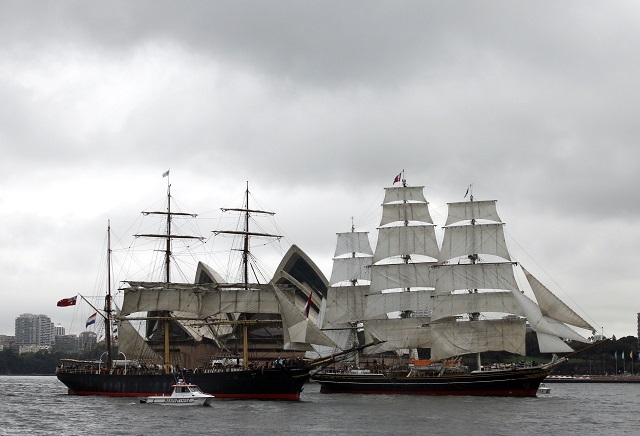
Stad Amsterdam, a 60-meter, three-mast clipper ship, reenacts Charles Darwin's original voyage on HMS Beagle. (AP Image/Ric Feld)
This summer, 160 years ago, it dawned on Charles Darwin that he might have to go public with the theory of evolution. He had been working on his theory slowly, gradually building it out for decades. And Darwin probably would have kept working on it, if not for a letter he received from English naturalist Alfred Russel Wallace, which outlined Wallace’s own ideas about natural selection; ideas that, unfortunately for Darwin, were very similar to his own. Iain McCalman, author of Darwin's Armada: Four Voyages and the Battle for the Theory of Evolution, walks us through the complicated origins (no pun intended) of the theory of evolution, and how that theory changed everything from biology to religion to politics.
Three Takeaways:
- Once Darwin received the letter, he was despondent, thinking that Wallace would receive all the credit for the theory of natural selection. However, Darwin’s friends and colleagues quickly cobbled together some of his old letters that outlined his ideas, and then suggested that Darwin’s and Wallace’s letters be read out simultaneously in the Royal Society.
- Why isn’t Alfred Russel Wallace more well known? McCalman says that there are two main reasons. The first is that Darwin had actually done an extraordinary amount of work to support the theory. The second is that Wallace was an easy-going, working-class man, removed from the upper-class circles that Darwin ran in.
- Evolution was actually was accepted in Great Britain relatively quickly. By the end of the 1870s, even the Anglican Church had assimilated it, according to McCalman. But the theory became controversial in America when evangelical and fundamentalist groups started to oppose it.
More Reading:
- Evolution is an amazing process, but it doesn’t lead to perfection. Here’s an interview we conducted with biologist Nathan Lents all about the quirks in our bodies.
- National Geographic examines how humans are shaping our own evolution.
- NPR takes a look at why Darwin, viewed as a hero in Great Britain, has a more mixed legacy in America.
- If you’d like to know more about what people believed BEFORE the theory of evolution, here’s a summary from The American Museum of Natural History.

